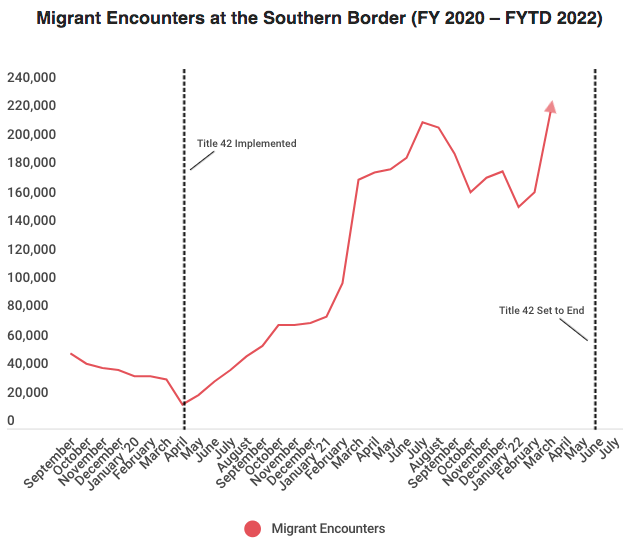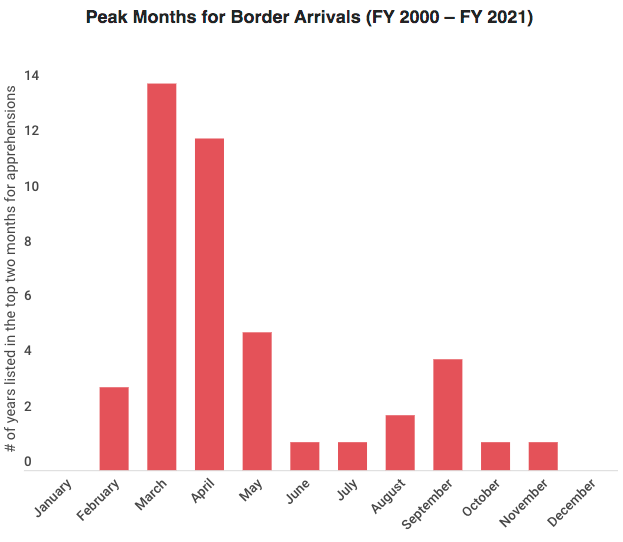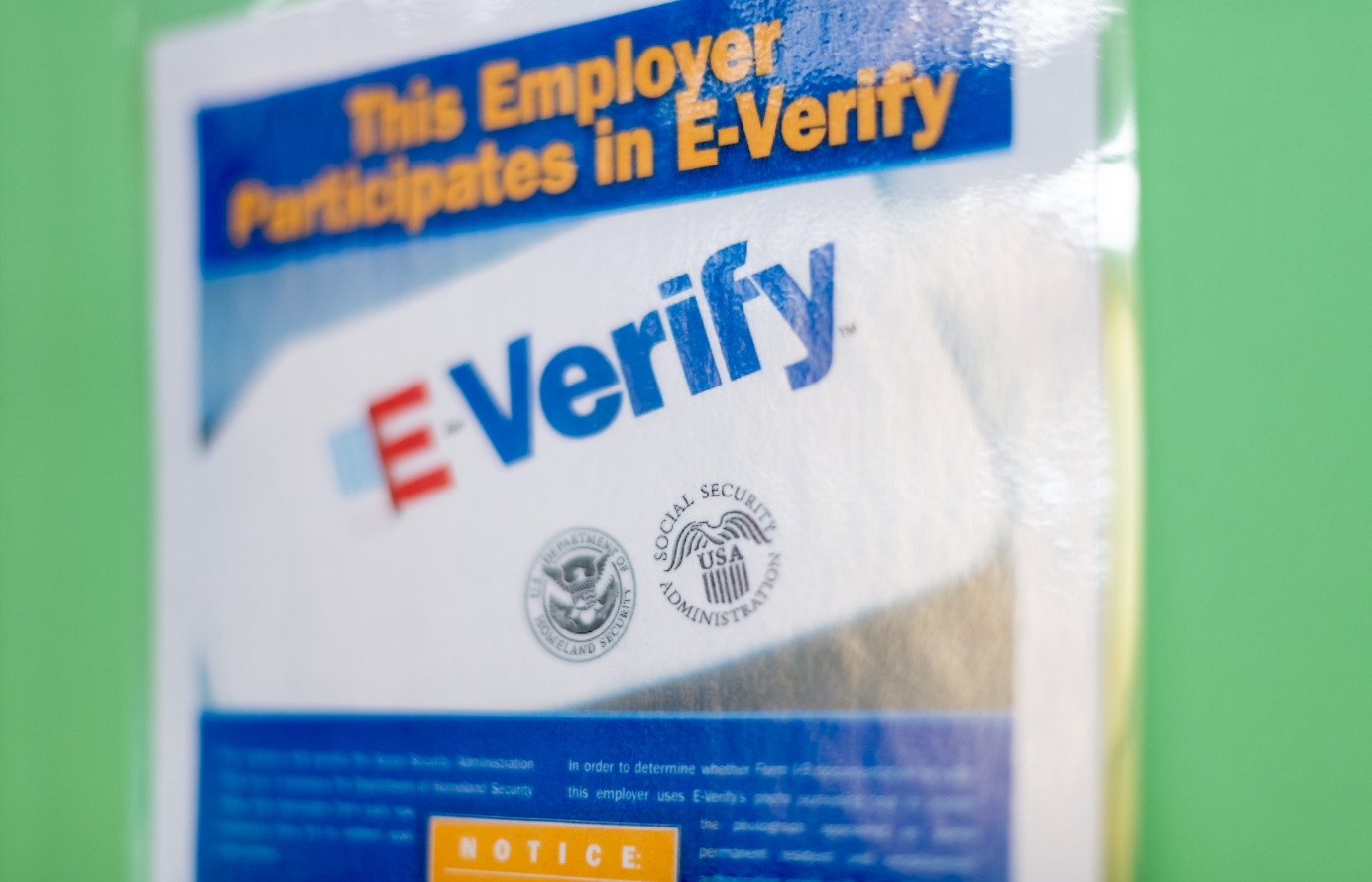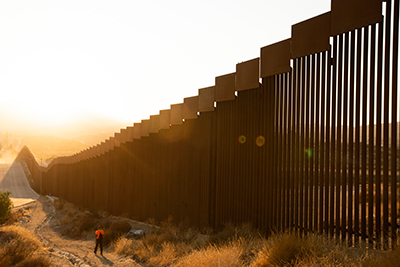Explainer: Title 42 and What Comes Next at the Border
Authored by Danilo Zak and orginally published on immigrationforum.com
On March 30, 2022, the Centers for Disease Control and Prevention (CDC) issued a 30-page Public Health Determination suspending the use of Title 42 at the border. The pandemic-era policy has been used by both the Trump and Biden administrations to rapidly expel large numbers of arriving migrants without offering them the chance to seek humanitarian protection under U.S. law. The suspension of Title 42 is set to go into effect on May 23.
Title 42 has been a significant part of both the Trump and Biden administrations’ border policies and management strategies since it was first implemented at the start of the COVID-19 pandemic in March 2020. It has been used to supersede existing federal law at the border (under Title 8 of the United States Code, which governs immigration law), resulting in perverse incentives that have benefited cartels and human smugglers and created challenges for Border Patrol officers.
Members of both parties have raised concerns that the Biden administration will not be ready to manage and process increasing numbers of migrants at the border without the use of Title 42. This explainer will provide more information about Title 42, its impact on the border, and what we can expect when the policy is lifted in May.
What is Title 42?
Title 42 is a public health law that allows U.S. Customs and Border Protection (CBP) to deny individuals entrance into the United States in order to “prevent [the] spread of communicable disease.” It has been used to immediately expel arriving migrants, including hundreds of thousands of families and children, without allowing them to first apply for asylum or other potential humanitarian protections.
“Title 42” is actually a broad segment — or “title”— of the U.S. legal code that deals with public health and social welfare. The border policy often referred to as “Title 42” is derived from a previously obscure provision of a 1944 public health bill that authorizes health officials to prohibit the introduction of certain individuals if there is “serious danger” that they might introduce a communicable disease into the U.S. The specific provision is 42 U.S.C. § 265.
In March 2020, amid the onset of the COVID-19 pandemic, then-CDC director Robert Redfield issued an order “pursuant” to 42 U.S.C. § 265 suspending the introduction of certain individuals traveling from Mexico and Canada, noting the action was “necessary to protect the public health.” A regulation was released the same day that provided CBP agents with legal authority to carry out the order, and CBP immediately began using “Title 42” to rapidly expel arriving migrants without allowing them the opportunity to apply for asylum or other legal protections.
Title 42 only applies to asylum seekers and other irregular migrants. It does not apply to U.S. citizens, visa holders, or anyone else crossing the border from Mexico or Canada. The policy has remained in place even as other pandemic restrictions have been lifted across the country, including for the millions of travelers who cross the border each month for tourism, trade, and other purposes. As of February 2022, Title 42 has been used over 1.7 million times to expel migrants.
Title 42 is not an immigration authority, and the order has been used to supersede federal law at the border — which is under Title 8 of the U.S. Code – and abrogate legal rights that have been guaranteed to arriving migrants for decades.

How has Title 42 impacted the border?
Reliance on Title 42 rather than laws designed to govern immigration and border management has created perverse incentives at the border, benefiting cartels and transnational criminal organizations and encouraging an increasing number of migrants to attempt to cross into the United States.
After Title 42 was put into place at the border, migrant encounters reported by CBP increased every month for 15 straight months. This is in part because the use of Title 42 at the border incentivizes migrants to attempt to cross multiple times between ports of entry (POEs). Because they are not based in existing immigration or border laws, Title 42 expulsions carry zero penalties for repeat entries and they do not distinguish between those with meritorious claims to protection and those attempting to enter the U.S. undetected.

Source: CBP, Preliminary March Data reported in the Washington Post
Under Title 42, everyone is immediately returned, often to Northern Mexico, where individuals can try to cross again and again and again. According to one report, some individuals have attempted to cross as many as 30 times in one calendar year. Overall recidivism rates — or the percentage of migrants apprehended more than one time by CBP within a fiscal year — nearly quadrupled after Title 42 was implemented, rising from 7% in 2019 to an average of 27% in 2021 and 2022. These high rates of repeat crossers have inflated overall migrant encounters by over 750,000 since Title 42 has been in effect.

Source: CBP
The use of Title 42 and the related increase in recidivism and overall encounters has caused significant challenges at the border. In a June 2021 Government Accountability Office (GAO) report, Border Patrol officials reported that Title 42 “negatively affected enforcement,” leading to the “highest level of recidivism in decades” and “reducing opportunities to gather intelligence.”
Title 42 has also been a major boon to cartels and transnational criminal organizations involved in the smuggling of migrants. According to three human smugglers interviewed by Reuters, Title 42 has been a major windfall. “It’s great for us,” one said, noting that under Title 42 he is able to charge $14,000 for three separate attempts to cross. Another agreed: “We’re making more money.” Criminal organizations also prey on vulnerable migrants returned to dangerous conditions in Northern Mexico under Title 42, where they are sometimes expelled in the dead of night and lack access to shelter and safety. One senior border official said: “Cartels or transnational criminal organizations are taking advantage of the situation.”
The most chaotic and disorderly scenes at the border in the past year can be traced back to Title 42. When large numbers of Haitians began crossing the border in Del Rio, Texas in September 2021, they did so in part because under Title 42, there is often no option to request asylum in a more orderly fashion at a port of entry. Earlier in 2021, CBP and HHS facilities were overwhelmed by high numbers of unaccompanied children in part because families were turned away into danger under Title 42 and many parents chose to protect their children by sending them across the border alone.
How has Title 42 impacted migrants seeking protection?
Title 42 has resulted in hundreds of thousands of migrants being returned to Mexico or their home countries without the opportunity to seek asylum or other protections under U.S. law.
A regularly-updated Human Rights First report has documented 9,886 incidents of kidnapping, torture, rape, and other violent attacks on those who have been blocked or expelled to Mexico by Title 42. This figure represents only those incidents that have been publicly reported, and the actual toll on the lives of asylum seekers is likely far greater.
Title 42 expulsions occur rapidly, sometimes in the middle of the night and often after a “lateral flight” to a completely different part of the border. There is barely any consideration for the safety or conditions where migrants are being expelled (the one protection in place is available only if migrants proactively raise claims related to the Convention Against Torture). In August 2021, the Biden administration began partnering with Mexico to conduct “chain expulsions” of Central American migrants, leaving them in remote villages in Guatemala far from their homes. Lateral flights and chain expulsions are intended to reduce recidivism, but appear to have had limited success, with recidivism rates remaining relatively stable throughout the implementation of those practices.
Not all arriving migrants have been impacted by Title 42. While the Trump administration used Title 42 to process 88% of all arrivals from March 2020 to January 2021 (including thousands of unaccompanied children), the Biden administration has exempted certain categories of migrants from its application, using Title 42 for slightly more than half (about 56%) of all arrivals from February 2021 to February 2022.
These exemptions are due to several reasons. First, the Biden administration has exempted some of the most vulnerable migrants from the protocol, including all unaccompanied children. Second, following a series of reforms to Mexican law regulating the detention of migrant children and families, Mexico has refused to receive many migrant families expelled under Title 42 because migrant shelters in certain areas have reached capacity. Third, there are certain nationalities which Mexico has not agreed to receive and there is no repatriation agreement established with the country of origin. These include Colombians, Nicaraguans, Cubans, Russians, and Ukrainians. All individuals exempted from Title 42 have been processed under standard Title 8 removal proceedings.
What will happen at the border when Title 42 is lifted?
It is probable that migrant arrivals continue to increase throughout the spring and early summer of 2022, with the planned suspension of Title 42 in May likely to — at least initially — drive these numbers up further. While the Biden administration has laid out some initial steps to address an expected increase, the arrivals are likely to put further strain on border management and processing capacity.
Seasonal trends have repeatedly led to spikes in migrant arrivals each spring. Over the last two decades, the more temperate months of March, April, and May have seen migration peak far more often than other months. While migration tended to peak in March throughout the 2000’s, more recently we have seen increases later in the spring – May has been the peak month in five of the last eight years. This trend is likely to recur regardless of whether Title 42 is lifted or not.

Source: CBP
In addition to expected seasonal increases, the lifting of Title 42 is expected to spur additional migration at the border, at least initially, for multiple reasons. Some number of individuals previously turned away under Title 42 may attempt to cross again to assert legal requests for asylum and other protections. These migrants will be processed under Title 8, with some receiving the chance to move forward with asylum claims and others deported.
Other individuals may attempt to cross the border this spring and summer at the behest of cartels and smuggling networks. These transnational criminal networks are likely to attempt to take advantage of prospective migrants who may not understand that despite the policy change at the border, they will continue to face removal proceedings under Title 8.
While lifting Title 42 will reduce recidivism and drive down overall arrival numbers in the long-run, the initial increase in border crossings from these groups means that it will likely take months for border arrivals to start falling. Even prior to the CDC announcement on March 30, increases in arrivals at the border had already begun – largely reflecting seasonal trends.
According to numerous reports, preliminary CBP data indicates an increase to over 200,000 migrant encounters in March 2022. While previous predictions from the administration in early 2021 overestimated the actual number of arrivals, the Biden administration’s Office of Immigration Statistics (OIS) has begun preparing for 2022 scenarios ranging from 180,000 arrivals a month to 540,000 arrivals a month. The upper end of this range would represent a record and pose a significant burden on border personnel and infrastructure.
How does the Biden administration plan to replace Title 42?
In addition to surging resources and personnel to the border to respond to immediate increases in arrivals, the Biden administration has announced plans to implement or expand a series of procedures under Title 8 to take the place of Title 42 expulsions. These include a new regulation that will go into effect days after Title 42 is lifted that aims to expedite border processing — providing quick relief to asylum seekers with meritorious claims and rapid repatriation for those without.
On March 30, DHS released a fact sheet outlining its plan to respond to the suspension of Title 42 and increases in migration at the southern border. The plan lists the following steps, several of which have been underway for many months:
- Acquire and deploy resources to the border. The administration plans to use billions of dollars in funding that was allocated in the recently-passed FY 2022 omnibus appropriations bill to improve border processing capacity, including constructing new facilities to process and care for migrants. This includes steps to mitigate the spread of COVID-19 and vaccinate arriving migrants (public health experts have repeatedly stated that Title 42 is not necessary or effective at preventing the spread of COVID-19 at the border). To help coordinate these efforts, the administration created the Southwest Border Coordination Center (SBCC) in February 2022 to manage the interagency response along the border and prepare for increases in migration.
- Implement more humane and orderly border processing procedures while rapidly returning those who don’t have credible claims. In August 2021, the Biden administration proposed a rule that would expedite the asylum process — which currently takes many years from start to finish. Under the rule, asylum seekers at the border who demonstrate they have a credible fear of persecution would enter a fast-track, non-adversarial process before a USCIS asylum officer to advance their claims of protection. Those who do not pass the credible fear interview would be quickly returned to their countries of origin. The rule was finalized on March 24 and is set to be phased in days after Title 42 is lifted.
- Work with other countries in the hemisphere to manage migration. The immigration enforcement policies of Mexico and other countries in the Western Hemisphere have an outsized impact on the U.S. border. For example, after Mexico enacted visa restrictions on Venezuelans in January 2022, the number of Venezuelans arriving at the U.S.-Mexico border in February 2022 plummeted 87% - declining from 22,779 to 3,072. The Biden administration intends to continue working with Mexico, Costa Rica, and other countries to address root causes and coordinate responses to regional migration.
Because the new asylum rule referenced above is likely to take some time to fully implement along the border, current procedures used for those exempted from Title 42 provide a good idea for what border processing will look like in the immediate aftermath of May 23. The administration is likely to use some combination of the following procedures:
- Hold in ICE detention and placement into expedited removal.
- Process and release on alternatives to detention with notices to appear in court or to report to a nearby ICE office.
- Return to Mexico under Migrant Protection Protocols to continue asylum claims.
- Transfer to HHS facilities (only for unaccompanied migrant children).
The National Immigration Forum would like to thank policy intern Ben Ginsburg Hix for his contributions to this resource.








